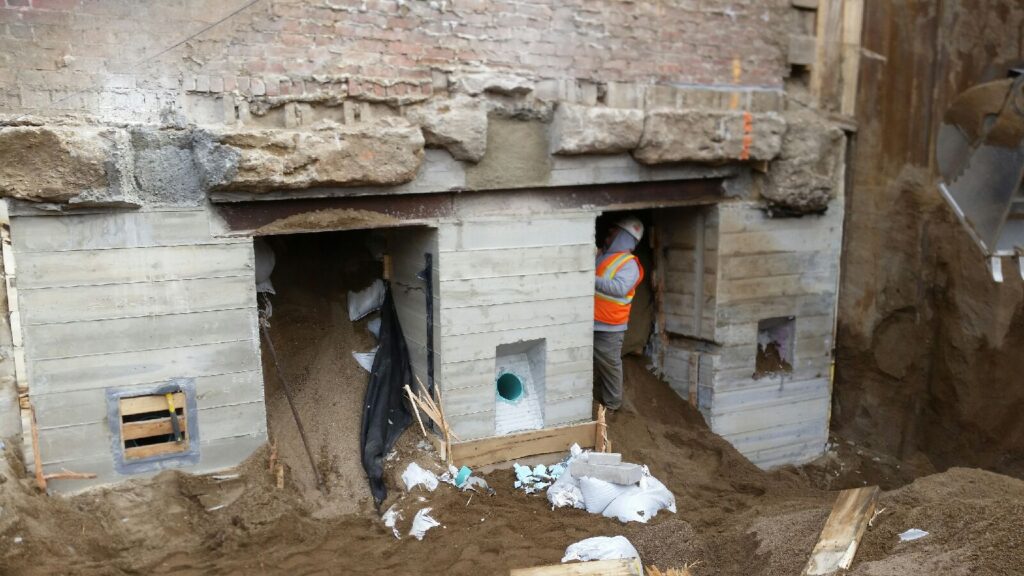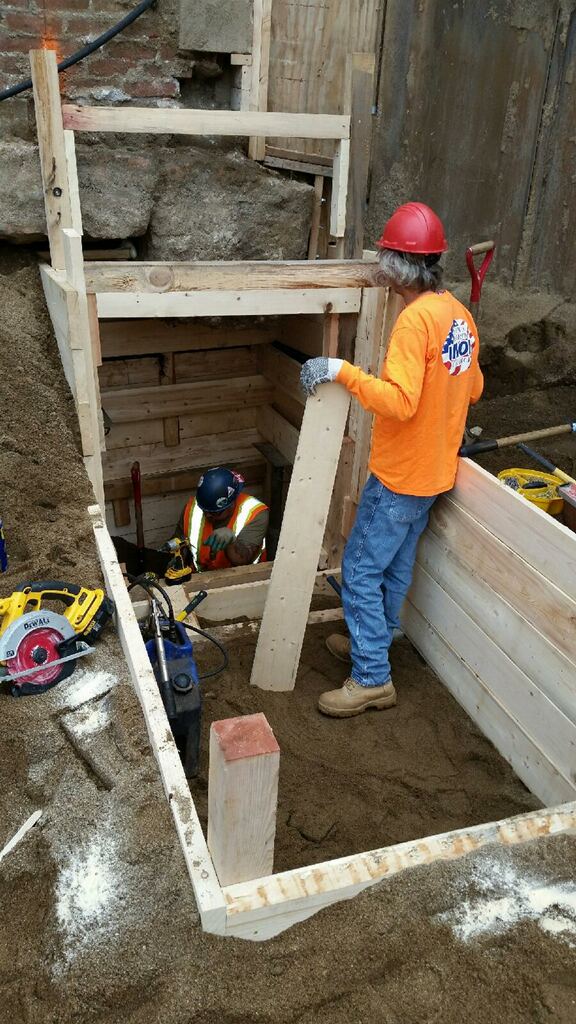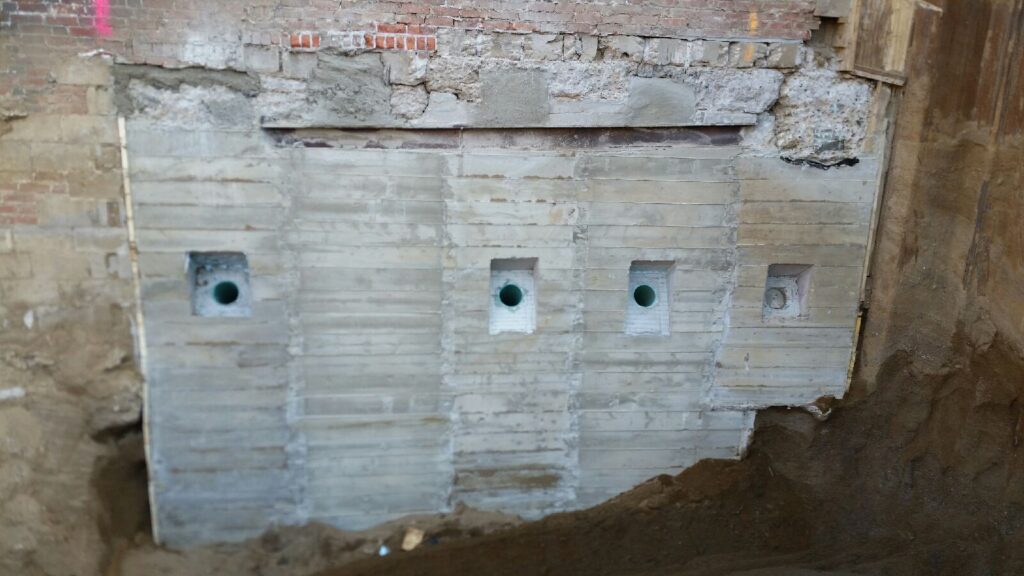
Underpinning is a type of reinforcement for the foundation of a building. It is a process performed by professional contractors to strengthen an existing foundation by lowering the footing and allowing it to rest on more solid ground. According to engineering plans, the ground beneath the foundation is excavated and concrete or steel beams are added to increase the foundation’s stability.
Why is it so important to a building’s structure & integrity?
A strong foundation is crucial for the safety and stability of a building, and underpinning ensures that the foundation can support the weight of the structure and any additional loads that may be placed on it. A building may become unstable and unsafe without proper underpinning, potentially leading to costly damage or collapse.


When is underpinning needed?
If a building is being extended or renovated, the additional weight of the new construction may require the foundation to be reinforced. In other cases, underpinning may be necessary due to changes in the ground beneath the foundation, such as soil settlement or erosion. In some instances, underpinning may be required as a preventative measure to ensure that the foundation is strong enough to support a building’s weight in the long term.
Who can perform this work?
Professional contractors with experience in foundation repair typically perform underpinning work. These contractors will thoroughly inspect the building to assess its foundation and determine the best course of action for underpinning. They will then excavate the ground beneath the foundation and add additional support, using specialized equipment and techniques to ensure that the work is done safely and effectively.
Foundation types
Several types of foundations can be used in buildings, including concrete slab foundations, crawl space foundations, and basement foundations. Each type has its unique characteristics and may require different approaches to underpinning. For example, concrete slab foundations are typically more straightforward to underpin, while crawl space foundations may require more complex techniques.
Underpinning Slab Foundations
Slab foundations are flat, solid and made of concrete poured onto a prepared surface. Underpinning is often performed by excavating below the foundation and installing additional support, such as steel beams or concrete.
Underpinning Basement Foundations
A basement or crawl space is a foundation with a usable area built below the ground level. The load of the building rests on the walls of the structure and other supports in the middle of the space which transfer to a below-ground slab. Like slab foundations, underpinning is usually performed by excavating below the foundation and installing additional support, such as steel beams or concrete.
Underpinning Pile Foundations
These foundations consist of a series of long, slender columns called piles that are driven into the ground to support the load of the building. Underpinning is typically performed by driving additional piles into the ground to provide additional support.
Work with a Professional in Underpinning
Underpinning is crucial for ensuring the stability and integrity of a building’s foundation. By adding additional support to the foundation, underpinning can prevent costly damage and improve the overall safety of the structure. If you are concerned about the stability of your building’s foundation, consult with a professional contractor to assess the situation and determine if underpinning is necessary. With Almasi Companies, our underpinning services are reinforced with years of experience to ensure your construction project runs smoothly and safely from start to finish.




